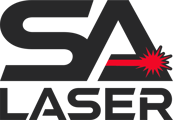Downloading LightBurn
Download LightBurn - directly from the Download / Trial page at lightburnsoftware.com. Links are provided from this page for downloading the current version of LightBurn and to prior versions of the software, as well as public beta versions of it.
Download the correct version for your computer:
- Windows 64-bit (or download LightBurn 1.5.06 for Windows 32-bit)
- macOS
- Ubuntu Linux 64-bit
Once you have finished downloading it, you should find the file in your 'Downloads' folder or a folder of your choosing.
Minimum Computer System Requirements✉¶
LightBurn will run on Windows 7.0 or later, macOS 10.11 or later, and some 64-bit Linux versions. Linux users should see Linux Installation for details about supported versions. We strongly recommend a computer with a display resolution of at least 1920x1080 (FHD resolution).
LightBurn v1.7 will be the final version released for Linux operating systems.
Support for older operating systems
LightBurn does not require a particularly powerful computer for most work, though if your designs have many images, more memory is better. Like most things, a faster computer will make it easier to work with large images or complex vector graphics.
Installation Instructions
Select your operating system below for more detailed installation assistance.
Windows Installation
Double-click the installer to launch it. Windows may ask if you want to verify you trust us first.

Click Next, then click Install. The installation will begin. When that is done, you will have this:

Installing Drivers
If you have never run LightBurn on this computer before you may need to install drivers. This is not required for updating an existing install.
- The FTDI driver is used primarily by DSP controllers, such as Ruida and TopWisdom.
- The EzCad2 driver is used by supported Galvo devices that use EzCad2 boards.
That's it! Locate the LightBurn icon to open the software
MacOS Installation
Installing LightBurn on macOS is accomplished the same way as most macOS software. After downloading the DMG file, open the file (typically by double-clicking) and drag LightBurn into your Applications folder. As long as you have version 1.2.00 or later, LightBurn should be ready to use. If you're using an older version, please see the information below for an additional step you'll need to take.
Versions before 1.2.00 were not notarized to be recognized by your computer as coming from a trusted developer. If you installed an older version, you'll need to follow the steps below to allow your computer to run the software:

MacOS Notarization Bypass Guide (fixing the 'unable to check it for malicious software' warning)
To Install the LightBurn application:
- Double-click the LightBurn.dmg file to mount the disk image
- Drag the LightBurn application into your applications folder
- Eject the LightBurn disk image, or drag it to the trash bin
When launching LightBurn for the first time:
- Open a Finder window
- Browse to the Applications folder
- Hold the Control key and click the LightBurn icon, or right-click or two-finger tap the icon
- Choose Open from the menu
- When macOS asks if it should open the program, say yes, and it will be listed as an exception in your launcher. From then on you can just launch the application normally.

